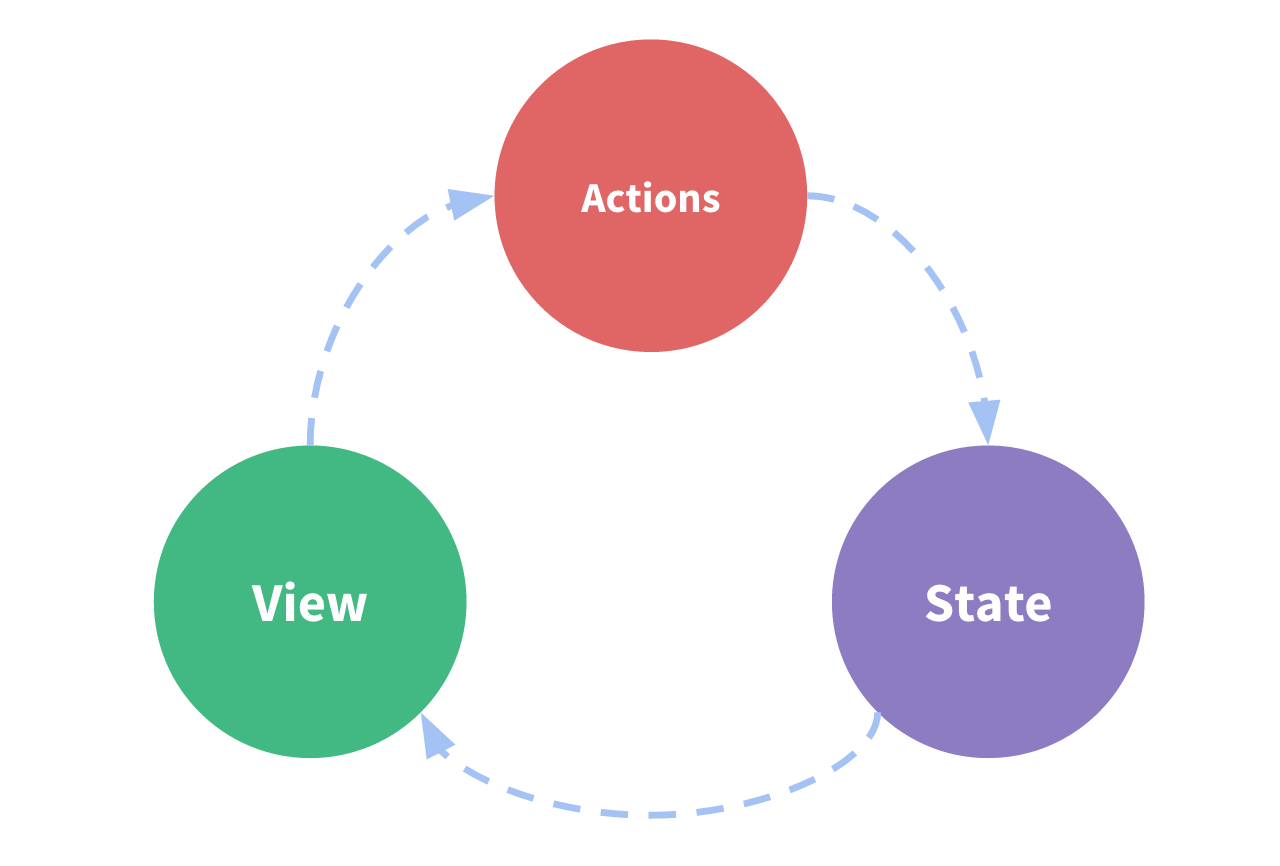上一节前端入门之(vuex源码解析一)我们简单的过了一下vuex的源码,然后也大概了解了vuex的原理,这一节我们继续带着demo,然后对照着vuex源码做解析.
先看一张官网文档vuex工作的流程图:

可以看到,当我们点击view中的某个按钮(+号)然后触发了一个action(‘increase‘)然后action继续commit到了mutation,mutation改变state(state.count++),然后改变view中数据(count+1)
可能文字解释起来有点抽象哈,我们直接上代码了,当我们点击+的时候,我们代码走了:
increase() {
this.$store.dispatch('increase');
},我们找到vuex中Store对象的dispatch方法:
构造方法中
Store.prototype.dispatch = function dispatch (_type, _payload) {
var this$1 = this;
// check object-style dispatch
//格式化我们传过来的参数
var ref = unifyObjectStyle(_type, _payload);
var type = ref.type;
var payload = ref.payload;
var action = { type: type, payload: payload };
//获取store中的actions
var entry = this._actions[type];
if (!entry) {
{
console.error(("[vuex] unknown action type: " + type));
}
return
}
//触发action的钩子函数
this._actionSubscribers.forEach(function (sub) {
return sub(action, this$1.state); });
//返回对应的action的处理结果
return entry.length > 1
? Promise.all(entry.map(function (handler) {
return handler(payload); }))
: entry[0](payload)
};不要被吓到哈,不难,我们一行一行解释,首先看到这么一行:
//格式化我们传过来的参数
var ref = unifyObjectStyle(_type, _payload);
var type = ref.type;
var payload = ref.payload;继续看unifyObjectStyle方法:
function unifyObjectStyle (type, payload, options) {
if (isObject(type) && type.type) {
options = payload;
payload = type;
type = type.type;
}
{
assert(typeof type === 'string', ("Expects string as the type, but found " + (typeof type) + "."));
}
return { type




 本文详细解析Vuex的工作流程,通过代码示例解释如何使用Store对象的dispatch方法触发action,以及action如何commit到mutation,进而改变state。文章探讨了action和mutation的执行过程,包括如何注册action钩子,以及dispatch和commit方法的核心实现。最后提到了Vuex的getter以及未涵盖的模块化、动态注册模块和浏览器调试插件等内容。
本文详细解析Vuex的工作流程,通过代码示例解释如何使用Store对象的dispatch方法触发action,以及action如何commit到mutation,进而改变state。文章探讨了action和mutation的执行过程,包括如何注册action钩子,以及dispatch和commit方法的核心实现。最后提到了Vuex的getter以及未涵盖的模块化、动态注册模块和浏览器调试插件等内容。
 最低0.47元/天 解锁文章
最低0.47元/天 解锁文章

















 562
562

 被折叠的 条评论
为什么被折叠?
被折叠的 条评论
为什么被折叠?








